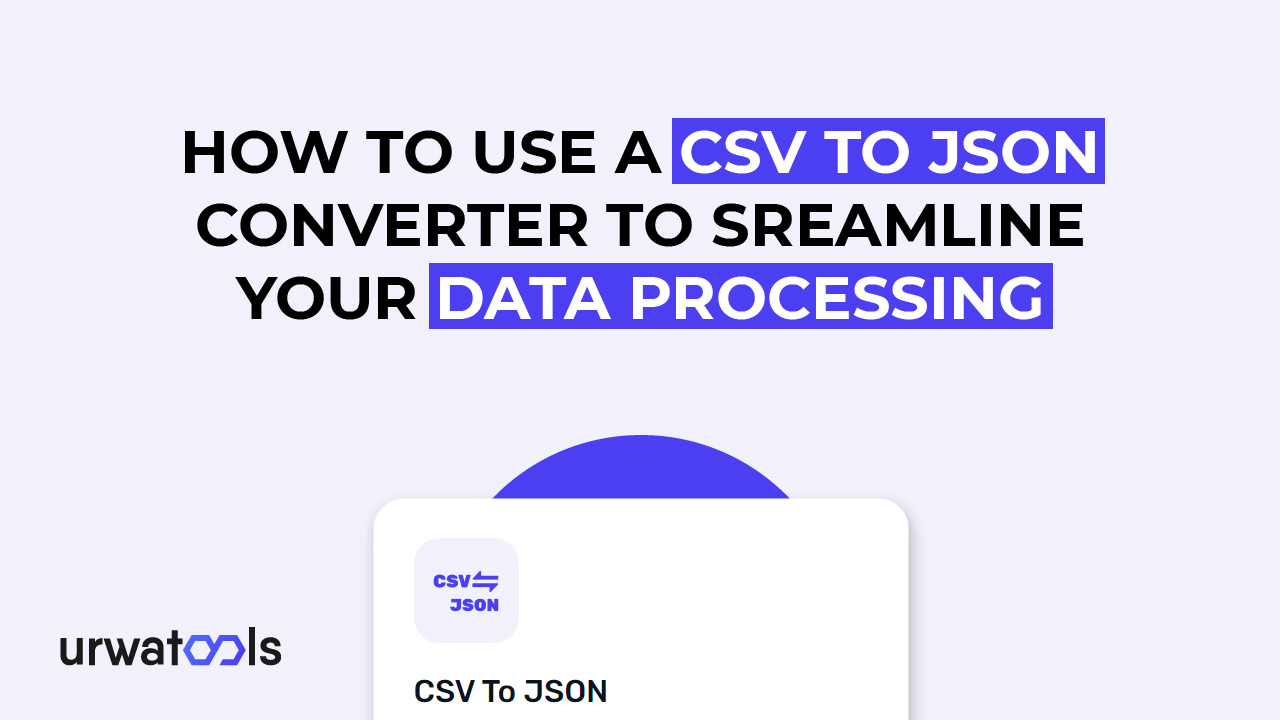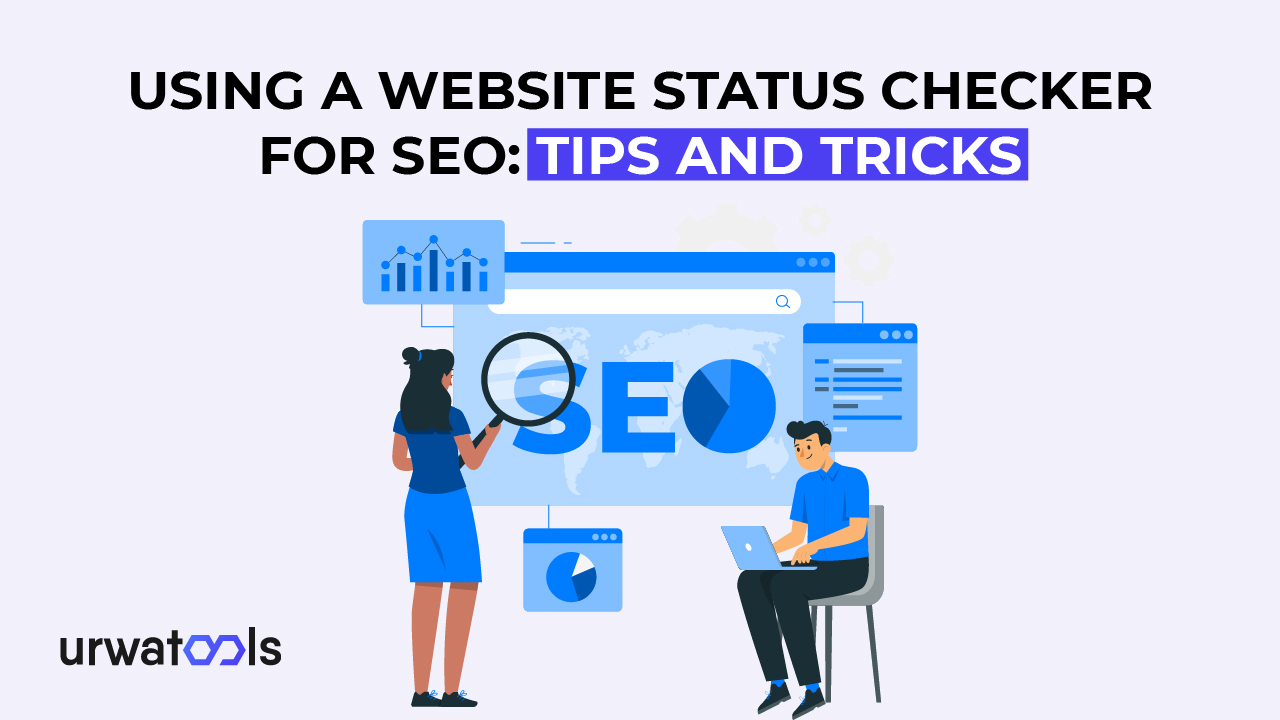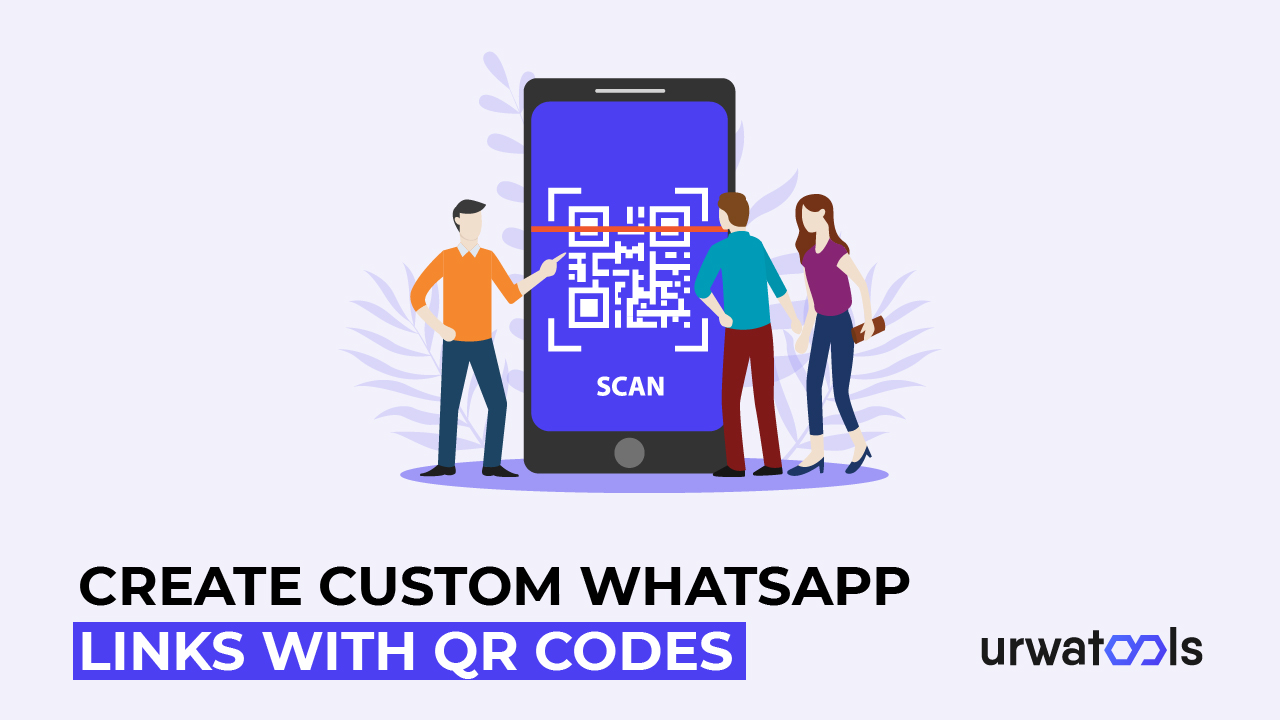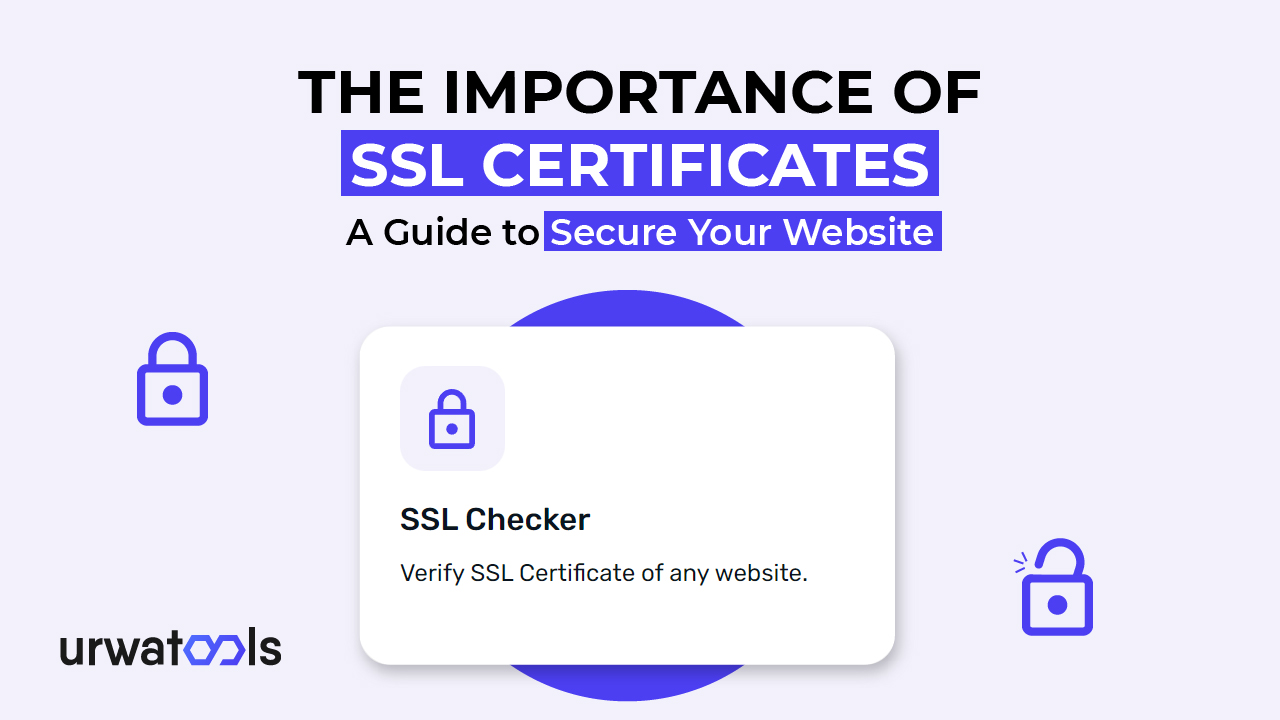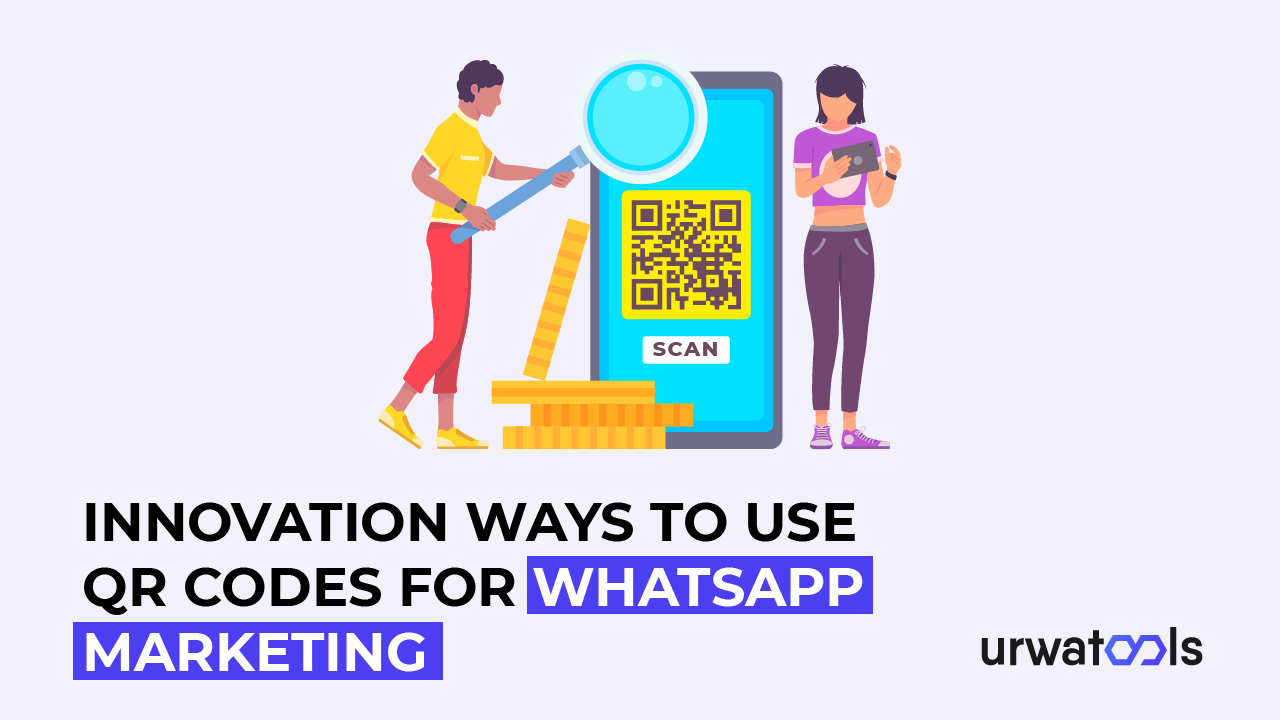A CSV to JSON is a software that helps to convert data into various formats. The software is incredible when converting a CSV file to a JSON format file to use on the web or in an application. As it is easy to write and read, most entrepreneurs use it. However, there are some drawbacks:
Using paid data systems (e.g., in order) is not allowed.
Because every row needs its line in the file, it can only manage small amounts of data effectively.
PermalinkStep 1: Understanding the Basics of CSV and JSON Formats
A CSV (Comma Separated Value) format is a plain text file that saves data in a horizontal and vertical format, such as rows and columns. To separate the Values use commas, while tabs or spaces contain different values on each column. The JSON (JavaScript Object Notation) format is similar to the CSV format in that square brackets instead of commas separate the values within each record. It supports arrays, individual records, and data sets that are more complex than a single line of text can represent.
PermalinkStep 2: Finding the Right CSV to JSON Converter
To find the right CSV to JSON converter, consider a few factors. First, ensure your chosen tool has an intuitive user interface (UI) and is easy to use. You want to spend less time figuring out how it works--you want results!
Second, check out the features of each program before deciding on one: Does it allow users to convert multiple files at once? Does it offer advanced options like custom delimiters and output formats? Finally, look into how much support is offered by the developers behind these programs; if they're responsive and helpful when answering questions from users like yourself, this can indicate their commitment to ensuring their product meets all your possible needs.
PermalinkStep 3: Converting Your CSV Data to JSON
Use these steps to convert your CSV data to JSON:
• With a text editor or spreadsheet application, open the CSV file.
• Copy (Ctrl+C) all the cells holding the data you wish to transform.
• Copy this selection and paste it into an online converter tool, such as https://csvtojson.com/#convert-csv-to-json! The result should be a JSON object that looks like this:
PermalinkStep 4: Dealing with JSON Output Data
What will you do with your JSON data now that you've got it? There are several ways to save, and access converted JSON data.
Interacting with the output JSON data, your code must be able to parse the information efficiently. Dealing with JSON output data implies that any processing software must be capable of natively reading both CSV and JSON files (or at least have an easy way of doing so).
PermalinkStep 5: Adding JSON Data to Your Applications
Finally, incorporate the JSON data into your programs. If you're using a web-based application, copy your newly converted CSV and save it as JSON. There are numerous approaches for converting between CSV and JSON formats in non-web-based applications (like Microsoft Excel) so that other apps on your computer can read them.
JSON provides three benefits over earlier formats like XML and HTML:
It is easier to grasp than XML since it uses fewer characters per element;
PermalinkStep 6: Automating the Process of Converting CSV to JSON
Now that you have a CSV to JSON converter, it is time to automate the conversion process.
There are a variety of methods for this:
Use an API or web service that converts your CSV file to a JSON object and returns it as an HTTP response. Automating the process is possible with any language or platform that supports HTTP requests. For example, anything like this might suffice if you run PHP and MySQL on a Linux server.
'http://api-name/convert?file=pathtofile&key=somekey' as $response;
Users can request HTTP from their command line interfaces using command line tools such as curl or other tools (CLIs). Some apps also support HTTPS connections, allowing them to be used securely without encryption keys.
PermalinkStep 7: Troubleshooting Common Issues with CSV to JSON Conversion
Common issues that arise when converting CSV to JSON:
While converting your CSV file to JSON format, you may encounter a few typical issues. If you experience one of these issues, you can try some troubleshooting procedures before contacting the developer or firm that produced your conversion program.
PermalinkField names with invalid characters:
It will reject if a field name contains invalid characters such as spaces or symbols such as @ or!. Converting from CSV to JSON format will result in an error. Because these symbols are not permitted in JavaScript object keys, they cannot be used as part of a key name when constructing objects from CSV data (or any other data source).
If this occurs during conversion, consider deleting any unnecessary spaces surrounding words inside each column header until all fields have been properly transformed into acceptable object keys with no invalid characters present.
PermalinkThe Need for Converting CSV to JSON
The necessity for effective data processing procedures has grown critical across numerous businesses in today's data-driven world. When working with data, two commonly used formats are Comma-Separated Values (CSV) and JavaScript Object Notation (JSON). While CSV has long been a popular format for storing and transferring tabular data, JSON benefits have increased the need for CSV to JSON conversion. Let us look deeper into the causes behind this conversion.
PermalinkI. Advantages of JSON for Data Processing
JSON has various data processing advantages over CSV. For starters, JSON offers a hierarchical data representation, allowing a variety of data structures to be organized. JSON is very beneficial when working with layered data or entity connections. CSV, on the other hand, lacks built-in support for hierarchical systems.
Second, JSON provides data types that improve data integrity. CSV values are interpreted as strings, making it difficult to distinguish between data formats. On the other hand, JSON supports strings, integers, booleans, arrays, and objects, allowing for more precise data representation and faster data manipulation and analysis.
PermalinkII. Challenges with CSV Format
Although CSV is widely accepted and simple to prepare, its limitations render it unsuitable for complicated data processing applications. One limitation of CSV is the need for a standardized schema specification. CSV files may have a distinct structure, including variable names and column order inconsistencies. Because of this heterogeneity, it is difficult to construct a consistent data structure, resulting in data consistency and mistakes during processing.
Furthermore, CSV does not allow nested data or complicated entity connections. CSV must provide an appropriate structure if the processed data requires hierarchical representation or connected entities. This constraint impedes effective data management and analysis, particularly when working with extensive, linked datasets.
PermalinkIII. Benefits of converting CSV to JSON
Converting CSV to JSON provides various advantages for more efficient data processing. JSON's hierarchical structure enables a more organized and understandable representation of complex data. The data may be formatted to precisely depict the relationships between entities by converting CSV to JSON, making it easier to access and interpret the data.
Second, JSON's support for many data types improves data integrity. The ability to represent integers, Booleans, and other data appropriately guarantees data consistency and handling correctly. JSON is very useful for computations, aggregations, or statistical data analysis.
Furthermore, JSON has emerged as the preferred format for many current data processing tools, libraries, and frameworks. Data may be easily integrated into these technologies by converting CSV to JSON, allowing for more efficient and optimized data processing operations. JSON's compatibility with online APIs and widespread use in numerous applications emphasize the importance of converting CSV to JSON for improved interoperability.
PermalinkExploring CSV to JSON Converter Tools
Converting CSV files to JSON format can improve data processing productivity and compatibility. Several converter software is available to complete this process, each with its features and functions. Let's go into the realm of CSV to JSON converter tools and see what they have to offer.
PermalinkI. CSV to JSON Converter Tools Overview
CSV to JSON converter tools are software applications or libraries that automate and simplify the process of converting CSV data to JSON format. These tools provide user-friendly or command-line interfaces, accommodating users with varying tastes and technical skills.
PermalinkII. Popular CSV to JSON Converter Tools
1. CSVKIT: CSVKIT is a robust Python command-line utility. It includes a CSV-to-JSON conversion function as part of a suite of tools for working with CSV files. CSVKIT enables users to handle and change CSV data quickly. It accepts various input formats, including simple CSV, Excel files, and SQL databases. It is a useful tool for data translation jobs.
2. Pandas: Pandas is a popular Python data manipulation and analysis toolkit. It has a variety of functions and techniques for dealing with tabular data, including the ability to convert CSV files to JSON format. Pandas have powerful data transformation tools that allow users to clean, filter, and modify data before converting it to JSON. It's common in data science and analytics workflows.
3. JQ: JQ is a command-line tool for working with JSON data. Although it focuses on JSON manipulation, it also supports CSV conversion. JQ is an excellent tool for complicated data processing jobs because it excels at extracting, filtering, and converting JSON data. Because of its ease of use and efficiency, it is a popular option among developers and data experts.
PermalinkIII. Features and Functionalities to Look for in a Converter Tool
When selecting a CSV to JSON converter tool, it's imperative to consider the following features and functionalities:
1. User-friendliness: Look for tools with simple interfaces or clear instructions that make conversion easier for users with varied technical experiences.
2. Customization options: Determine whether the program allows you to modify the output JSON format by setting key names, nesting levels, and data types. Convenience in selecting conversion parameters guarantees that the JSON output suits your needs.
3. Performance: Consider the converter tool's speed and efficiency, especially when dealing with huge CSV files or complicated data structures. Optimized algorithms or parallel processing capabilities in tools can drastically cut conversion time.
4. Error handling: Look for tools for errors, such as missing values or incompatible data formats. Error handling is robust, ensuring the integrity and quality of transformed JSON data.
5. Compatibility: Ensure the conversion tool supports your operating system and programming language. Some tools are language-specific, while others are cross-platform.
By evaluating these factors, you can select a converter tool that perfectly suits your needs and optimizes your CSV to JSON conversion process.
PermalinkStep-by-Step Guide to Using a CSV to JSON Converter
Converting CSV files to JSON format is a valuable skill in streamlining data-processing workflows. Here is a brief guide to effectively using a CSV-to-JSON converter tool to help you.
PermalinkI. Choosing a Trustworthy Converter Tool
Choose a CSV to JSON converter tool that meets your needs and preferences. Think about usability, performance, customization possibilities, and compatibility with your operating system and programming language.
PermalinkII. Installing and Configuring the Converter Tool
After choosing a conversion utility:
1. Install it on your PC.
2. Follow the installation instructions in the tool's manual or on the tool's website.
3. Ensure that the tool's requirements install any required dependencies or libraries.
PermalinkIII. Loading the CSV File for conversion.
Locate the CSV file you wish to convert to JSON after installation. Create a separate folder to keep your CSV and JSON files organized. Place the CSV file in this folder for convenient access.
PermalinkIV. Configuring conversion options
Examine the setup options provided by the converter tool before beginning the conversion. These options may include determining the delimiter used in the CSV file (e.g., comma, tab) and selecting any other settings, such as encoding or header handling. Customize these services to meet your individual needs.
PermalinkV. Executing the conversion process
Once the setting is complete, use the converter tool to begin the conversion process. Depending on your tool, this can be done using a command-line interface, a graphical user interface, or a script. Follow the tool's instructions or reference the documentation to determine the exact command or action needed to begin the conversion.
PermalinkVI. Validation and Verification of the Converted JSON Data
When the conversion procedure is complete, validating and confirming the generated JSON data is critical. Open the converted JSON file in a text editor or a JSON reader to confirm that the data is properly formed and structured. Examine the conversion for any potential mistakes, missing data, or inconsistencies that may have happened.
PermalinkVII. Additional data manipulation (Optional)
You can make additional data modifications on the transformed JSON data if necessary. Data manipulation might include filtering, sorting, or changing data to meet your unique requirements. You may need extra tools or libraries depending on the complexity of the operation.
PermalinkVIII. Save the finished JSON output.
Save the final JSON output at your chosen location once you are pleased with the converted JSON data and any additional alterations. Consider correctly naming the file to reflect its contents and purpose.
Following these step-by-step guidelines, you may efficiently utilize a CSV-to-JSON converter tool to optimize your data processing workflow. Review the converter tool's documentation for tool-specific instructions or advice.
PermalinkLimitations and considerations
While employing a CSV to JSON converter can substantially ease the data transformation process, it is critical to understand the limitations and constraints involved in this conversion. Understanding these variables will allow you to make more educated judgments while ensuring data quality and integrity. Let's go through some of the most critical limits and issues to remember.
PermalinkI. Data structure complexity
The data format complexity is one of the key limitations when converting CSV to JSON. CSV files represent tabular data with a flat structure of rows and columns. JSON, on the other hand, supports layered and hierarchical structures. When converting a CSV file to JSON, the converter tool may immediately wait to deduce the appropriate hierarchical connections or nested data. The converter tool must be carefully defined and configured to guarantee that the final JSON structure effectively represents the required data relationships.
PermalinkII. Data Integrity and Type Handling
CSV files can include data of several sorts, including numbers, strings, and dates. JSON, on the other hand, provides a broader range of data formats. Evaluating how the converter tool handles data types is critical during conversion. In rare circumstances, the converter may convert all values to strings, which might cause data integrity problems. Care should be taken to ensure that data types are kept and appropriately represented in the resultant JSON output.
PermalinkIII. Large dataset handling
Converting big CSV files to JSON can be memory-intensive and time-consuming. Converter software may struggle with huge files, resulting in performance difficulties or crashes. Before converting huge datasets, evaluating the converter program's capabilities and available system resources is critical. Consider splitting enormous files into smaller, more manageable portions or investigating alternate ways of dealing with massive datasets.
PermalinkIV. Encoding and Special Characters
CSV files can be encoded in various character encodings, including UTF-8 and ASCII. It is critical to consider the encoding compatibility of the original CSV file and the converter program while converting CSV to JSON. Data corruption or special character loss can occur when mismatched encodings are used. Check that the converter tool supports the appropriate encoding, or consider doing any necessary encoding conversions before converting CSV to JSON.
PermalinkV. Data Validation and Cleaning
It is recommended to complete data validation and cleaning before converting CSV to JSON. Inconsistencies, missing data, and formatting problems are common in CSV files. These concerns can influence the precision and quality of JSON data. Before beginning the conversion process, consider using data validation procedures such as checking for missing values, verifying data formats, and correcting any discrepancies.
PermalinkVI. Customization and Configuration Options
Different CSV to JSON converter software provide differing levels of flexibility and control. Evaluating the converter tool's capabilities and verifying that it matches your unique needs is critical. Consider the ability to build custom mappings, specify output formats, manage errors, and deal with unusual scenarios. You can personalize the conversion process to your requirements by weighing these options and securing the correct outcome.
PermalinkVII. Testing and verification
It is critical to properly test and validate the resultant JSON data after converting CSV to JSON. Examine the transformed data for inconsistencies, mistakes, or missing values. To confirm data integrity, compare the JSON output to the original CSV file. To guarantee compatibility and effective operation, test the transformed JSON data with downstream apps or processes that will consume it.
Written by
A full-stack web developer, entrepreneur, and compassionate individual.
A full-stack web developer, entrepreneur, and compassionate individual.

